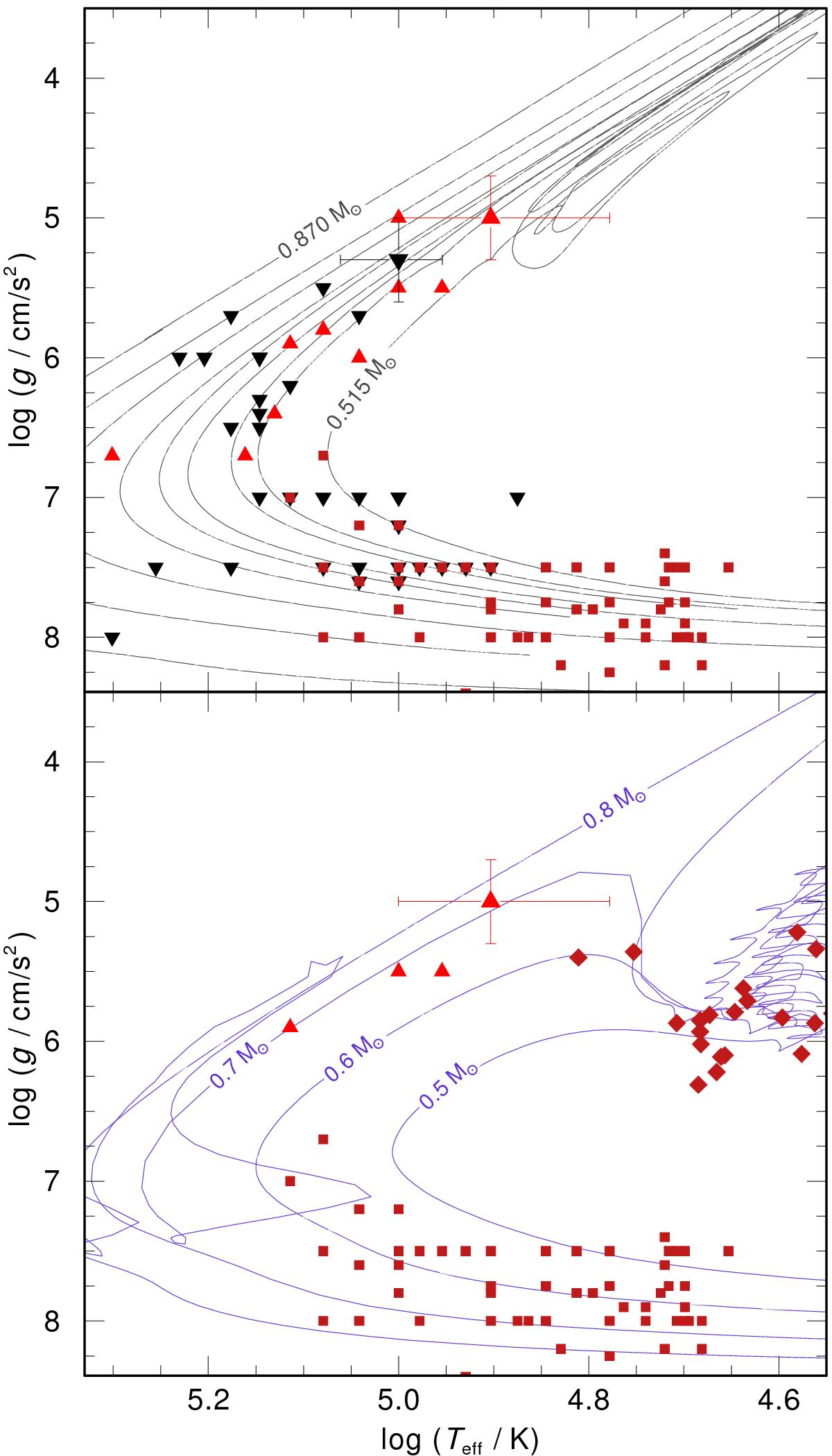Fig. 5

Locations of the O(He) star J0757 (red triangle with error bars) and the PG 1159 star J1556 (black inverted triangle with error bars) and other PG 1159 and O(He) stars (black inverted triangles and red triangles, respectively, De Marco et al. 2015; Reindl et al. 2014b; Werner & Rauch 2014; Werner et al. 2014; Gianninas et al. 2010; Wassermann et al. 2010; Werner & Herwig 2006) in the Teff−log g diagram. Their likely successors, the H-deficient white dwarfs (Reindl et al. 2014a; Werner et al. 2014; Mahsereci 2011; Hügelmeyer et al. 2006; Dreizler & Werner 1996) are indicated by filled-in red squares. The upper panel compares the location of these stars to (V)LTP evolutionary tracks (gray lines) of Miller Bertolami & Althaus (2007, 2006). For clarity, only two tracks are labeled with stellar masses. Intermediate tracks correspond to 0.530, 0.542, 0.565, 0.584, 0.609, 0.664, 0.741 M⊙. The lower panel compares only the locations of the C-rich O(He) stars (red triangles) and C-strong lined He-sdO stars (red rhombs) from the sample of Geier et al. (2015) with post-double He white dwarf merger tracks (purple lines) of Zhang & Jeffery (2012a,b).
Current usage metrics show cumulative count of Article Views (full-text article views including HTML views, PDF and ePub downloads, according to the available data) and Abstracts Views on Vision4Press platform.
Data correspond to usage on the plateform after 2015. The current usage metrics is available 48-96 hours after online publication and is updated daily on week days.
Initial download of the metrics may take a while.


